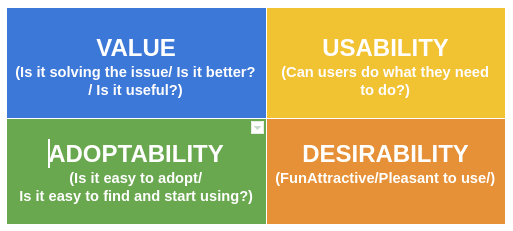THE UX BASICS
Things to know while designing UX
It’s very important to follow an intuitive process in order to make the complex UX design process easier.
Have you ever wondered how we get hooked to certain websites and spend hours without realising? Or, how it becomes so easy to navigate between some websites while with others it’s simply annoying even to identify the provided action items. So what makes these websites or products stand out? The answer to all these questions is a better User Experience Design. So grab a cup of coffee and let’s know, how, when and where we can use UX to make our products stand out by focusing on the User as the primary source of inspiration.
How to make UX easy:
It’s very important to follow an intuitive process in order to make the complex UX design process easier.
Follow an interactive prototyping process:
It’s important to follow an interactive process which makes the design even better and better with each interaction. Now, this process includes steps from UX research to Prototype Development to Assessing the developed prototypes.
Applying user-centred research and design methods
The design needs to be strongly focused on the target audience and their ease of use.
Understanding a bit about human behaviour
Even though it’s absolutely not essential to be a certified psychiatrist to be a good User Experience Designer but it’s very much required to have a bit of common sense about how humans react to a certain scenario.
Intuitive Process
An intuitive process includes 3 steps repeating in continuous order. The first step should be gathering the requirements of the system by research methodologies or assessing the prototypes (in any) for understanding loop wholes in the design. The second step should be to design the system according to the collected requirements. And the final step would be building a prototype on top of the design requirements. This whole process is repeated continuously until we reach our final goal as a product.
Key Methods: UX Research
Assess
- Interviews/ Surveys: Requirement gathering
Generic or Contextual (while testing a specific action/feature): With a conversation
Surveys Forms(In case of large numbers and high accuracy is needed)
2. Observation
Ethnographic Observation(self-observation by being in the scenarios while the user tests the prototype)/ Usage analytics
User testing (Self-report by the user). But remember that the process of use and interaction made while using the product is also important.
*3. Inspection Methods *(After having any prototype)
- Tracking it (Guideline-based inspection/ Walkthrough the prototype / Comparative Analysis with other products)
Developing User Stories
This step is all about unravelling information that is even secrets to the user. For example:
What all might be the scenarios while using the system
What are the Designing Alternatives that can be used to achieve the same goal
Developing Prototypes
Sketching and Ideation (Figuring out all the ideas) with pen and paper
Mapping and Navigation Design (To provide the workflow of the product)
Comparative Research with other similar types of products
We are create Low(pen paper sketch)-> Mid(wireframes) > Hi-Fidelity(Interactive designs) Prototypes gradually.
Evaluation
Evaluation can be proceeded by two sets of audience.
By the users
By experts in beta testing (after developing a prototype)
Common Sense
Previously we talked about common sense regarding human behaviour. Now, what exactly we need to to understand about user? i.e:
User Needs and Practices
User responses to possible design
What works for the user and what doesn’t
Goals of UX is to provide
Features of Good Design to make the product usable:
- Affordance
The idea of how the thing could possibly be used
What actions are possible
2. Signifier
- Where the action should take place (it should be clear enough)
3. Feedback
- Sending back information about action taken place (like a reaction)
So that’s it for this article. I hope you all liked it and if you liked it then do not forget to tell us your thoughts in the comment section below.
If you want to connect with me, here I am at Twitter or Instagram
Follow our community LinkedIn group, Facebook Page and Twitter for more such articles and posts and meet like-minded people to collaborate.











Top comments (0)